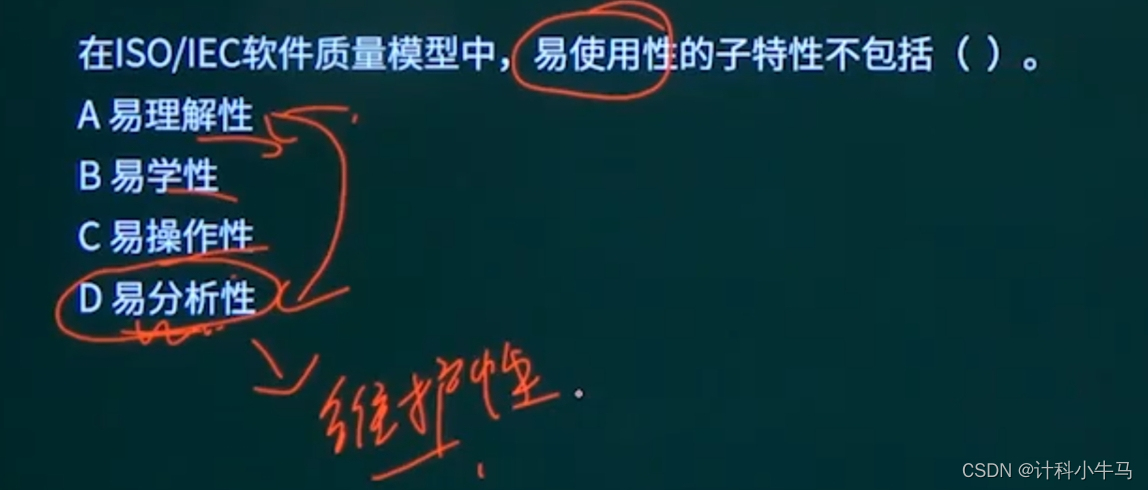目录
1.unordered_map和unordered_set的使用
1.1unordered_set类的介绍
1.2unordered_set和set的使用差异
1.3unordered_map和map的使用差异
1.4unordered_multimap/unordered_multiset
2.用哈希表封装实现unordered_set和unordered_map
2.1实现出复用哈希表的框架并支持insert
2.1.1初步的unordered_map和unordered_set的框架
2.1.2初步泛型哈希表框架的实现
2.2iterator的实现
2.3unordered_map和unordered_set代码实现
2.3.1unordered_map.h
2.3.2unordered_set.h
2.3.3hash_tables.h
2.3.4测试代码test.cpp
1.unordered_map和unordered_set的使用
这里的介绍与set和map进行对比做介绍。map和set的使用可以参考C++中map和set的使用。
unordered_set和unordered_multiset的参考文档:https://legacy.cplusplus.com/reference/unordered_set/
unordered_map和unordered_multimap的参考文档:https://legacy.cplusplus.com/reference/unordered_map/
1.1unordered_set类的介绍
unordered_set的声明如下,Key就是unordered_set底层关键字的类型:
template < class Key, //unordered_set::key_type/value_type
class Hash = hash<Key>, // unordered_set::hasher
class Pred = equal_to<Key>, // unordered_set::key_equal
class Alloc = allocator<Key> // unordered_set::allocator_type
>
class unordered_set;unordered_set默认要求Key⽀持转换为整形,如果不⽀持或者想按⾃⼰的需求⾛可以⾃⾏实现⽀持将Key转成整形的仿函数传给第⼆个模板参数。
unordered_set底层是⽤哈希桶实现,增删查平均效率是 O(1) ,迭代器遍历不再有序,为了跟set区分,所以取名unordered_set。
1.2unordered_set和set的使用差异
1.unordered_set和set的第⼀个差异是对key的要求不同,set要求Key⽀持⼩于⽐较,⽽unordered_set要求Key⽀持转成整形且⽀持等于⽐较。
2.unordered_set和set的第⼆个差异是迭代器的差异,set的iterator是双向迭代器,unordered_set是单向迭代器,其次set底层是红⿊树,红⿊树是⼆叉搜索树,⾛中序遍历是有序的,所以set迭代器遍历是有序+去重。⽽unordered_set底层是哈希表,迭代器遍历是⽆序+去重。
3.unordered_set和set的第三个差异是性能的差异,整体⽽⾔⼤多数场景下,unordered_set的增删查改更快⼀些,因为红⿊树增删查改效率是 O(logN) ,⽽哈希表增删查平均效率是 O(1) ,具体可以参看下⾯代码的演⽰的对⽐差异。
#include <vector>
#include <unordered_set>
#include <unordered_map>
#include <set>
#include <iostream>
using namespace std;
void test()
{
const size_t N = 1000000;
unordered_set<int> us;
set<int> s;
vector<int> v;
v.reserve(N);
srand(time(0));
for (size_t i = 0; i < N; i++)
{
//v.push_back(rand()); // N⽐较⼤时,重复值⽐较多
v.push_back(rand() + i); // 重复值相对少
//v.push_back(i); // 没有重复,有序
}
size_t begin1 = clock();
for (auto e : v)
{
s.insert(e);
}
size_t end1 = clock();
cout << "set insert:" << end1 - begin1 << endl;
size_t begin2 = clock();
us.reserve(N);
for (auto e : v)
{
us.insert(e);
}
size_t end2 = clock();
cout << "unordered_set insert:" << end2 - begin2 << endl;
int m1 = 0;
size_t begin3 = clock();
for (auto e : v)
{
auto ret = s.find(e);
if (ret != s.end())
{
++m1;
}
}
size_t end3 = clock();
cout << "set find:" << end3 - begin3 << "->" << m1 << endl;
int m2 = 0;
size_t begin4 = clock();
for (auto e : v)
{
auto ret = us.find(e);
if (ret != us.end())
{
++m2;
}
}
size_t end4 = clock();
cout << "unorered_set find:" << end4 - begin4 << "->" << m2 << endl;
cout << "set插入数据个数:" << s.size() << endl;
cout << "unordered_set插入数据个数:" << us.size() << endl;
size_t begin5 = clock();
for (auto e : v)
{
s.erase(e);
}
size_t end5 = clock();
cout << "set erase:" << end5 - begin5 << endl;
size_t begin6 = clock();
for (auto e : v)
{
us.erase(e);
}
size_t end6 = clock();
cout << "unordered_set erase:" << end6 - begin6 << endl << endl;
}
int main()
{
test();
return 0;
}
可以看到,在Release版本下,unordered_set的增删查效率都要高于set。
1.3unordered_map和map的使用差异
unordered_map和map的使用差异与unordered_set和set的使用差异完全相同,不同的就是存储的节点数据类型不同。
1.4unordered_multimap/unordered_multiset
unordered_multimap/unordered_multiset跟multimap/multiset功能完全类似,⽀持Key冗余。unordered_multimap/unordered_multiset跟multimap/multiset的差异也是三个⽅⾯的差异,key的要求的差异,iterator及遍历顺序的差异,性能的差异。
2.用哈希表封装实现unordered_set和unordered_map
2.1实现出复用哈希表的框架并支持insert
这⾥相⽐源码调整⼀下,key参数就⽤K,value参数就⽤V,哈希表中的数据类型,我们使⽤T。
unordered_map和unordered_set的模拟实现类结构更复杂⼀点,但是⼤框架和思路是完全类似的。因为HashTable实现了泛型不知道T参数到底是K,还是pair<K, V>,那么insert内部进⾏插⼊时要将K对象转换成整形并取模,因为pair的value不参与计算取模,且默认⽀持的是key和value⼀起⽐较相等,我们需要的是任何时候只⽐较K对象,所以我们在unordered_map和unordered_set层分别实现⼀个MapKeyOfT和SetKeyOfT的仿函数传给HashTable的KeyOfT,然后HashTable中通过KeyOfT仿函数取出T类型对象中的K对象,再转换成整形并取模。
2.1.1初步的unordered_map和unordered_set的框架
//unordered_set.h
#pragma once
#include "hash_tables.h"
namespace xiaoc
{
//K为存储的key的类型
//Hash用于接收仿函数,用于将key转换为无符号整型进行后续的映射
template<class K, class Hash = HashFunc<K>>
class unordered_set
{
struct SetKeyOfT
{
const K& operator()(const K& key)
{
return key;
}
};
public:
bool insert(const K& key)
{
return _ht.Insert(key);
}
private:
HashTables<K, K, SetKeyOfT, Hash> _ht;
};
}//unordered_map.h
#pragma once
#include "hash_tables.h"
namespace xiaoc
{
//K为key数据的类型
//V为value数据的类型
template<class K, class V, class Hash = HashFunc<K>>
class unordered_map
{
struct MapKeyOfT
{
const K& operator()(const pair<K, V>& kv)
{
return kv.first;
}
};
public:
bool insert(const pair<K, V>& kv)
{
return _ht.Insert(kv);
}
private:
HashTables<K, pair<K, V>, MapKeyOfT, Hash> _ht;
};
}2.1.2初步泛型哈希表框架的实现
这里与之前C++哈希表的实现中链地址法实现的哈希表基本相同,修改的就是存储的数据不同以及增加了一个模板参数KeyOfT来接收上层传来的仿函数。
#pragma once
#include <vector>
using namespace std;
namespace xiaoc
{
//不管是unordered_map还是unordered_set
//对哈希值key的处理调用相同的HashFunc就行
//所以这里对HashFunc的实现在hash_tables.h中
template<class K>
struct HashFunc
{
size_t operator()(const K& key)
{
return (size_t)key;
}
};
//哈希表节点类
//存储的节点的类型结构
//T是节点中存储的数据类型
template<class T>
struct HashNode
{
T _data;
HashNode<T>* _next;
HashNode(const T& data)
:_data(data)
,_next(nullptr)
{}
};
//哈希表类
template<class K, class T, class KeyOfT, class Hash = HashFunc<K>>
class HashTables
{
typedef HashNode<T> Node;
inline unsigned long __stl_next_prime(unsigned long n)
{
static const int __stl_num_primes = 28;
static const unsigned long __stl_prime_list[__stl_num_primes] =
{
53,97,193,389,769,1543,
3079,6151,12289,24593,49157,
98317,196613,393241,786433,1572869,
3145739,6291469,12582917, 25165843,
50331653,100663319, 201326611, 402653189,
805306457,1610612741, 3221225473, 4294967291
};
const unsigned long* first = __stl_prime_list;
const unsigned long* last = __stl_prime_list + __stl_num_primes;
const unsigned long* pos = lower_bound(first, last, n);
return pos == last ? *(last - 1) : *pos;
}
public:
HashTables()
//:_tables(__stl_next_prime(0))
:_tables(11)
,_n(0)
{}
~HashTables()
{
for (int i = 0; i < _tables.size(); i++)
{
Node* cur = _tables[i];
while (cur)
{
Node* next = cur->_next;
delete cur;
cur = next;
}
_tables[i] = nullptr;
}
}
bool Insert(const T& data)
{
KeyOfT kot;
Hash hash;
size_t hashi = hash(kot(data)) % _tables.size();
//扩容
if (_n == _tables.size())
{
vector<Node*> newtables(__stl_next_prime(_tables.size() + 1), nullptr);
for (size_t i = 0; i < _tables.size(); i++)
{
Node* cur = _tables[i];
while (cur)
{
Node* next = cur->_next;
size_t hashi = hash(kot(cur->_data)) % newtables.size();
//头插
cur->_next = newtables[hashi];
newtables[hashi] = cur;
cur = next;
}
_tables[i] = nullptr;
}
_tables.swap(newtables);
}
//头插
Node* newnode = new Node(data);
newnode->_next = _tables[hashi];
_tables[hashi] = newnode;
++_n;
return true;
}
private:
vector<Node*> _tables;
size_t _n;
};
}2.2iterator的实现
iterator实现的⼤框架跟list的iterator思路是⼀致的,⽤⼀个类型封装结点的指针,再通过重载运算符实现,迭代器像指针⼀样访问的⾏为,要注意的是哈希表的迭代器是单向迭代器。
这⾥的难点是operator++的实现。iterator中有⼀个指向结点的指针,如果当前桶下⾯还有结点,则结点的指针指向下⼀个结点即可。如果当前桶⾛完了,则需要想办法计算找到下⼀个桶。这⾥的难点反⽽是结构设计的问题,iterator中除了有结点的指针,还有哈希表对象的指针,这样当前桶⾛完了,要计算下⼀个桶就相对容易多了,⽤key值计算出当前桶位置,依次往后找下⼀个不为空的桶即可。
begin()返回第⼀个桶中第⼀个节点指针构造的迭代器,这⾥end()返回迭代器可以⽤空表⽰。
unordered_set的iterator也不⽀持修改,我们把unordered_set的第⼆个模板参数改成const K即可, HashTable<K, const K, SetKeyOfT, Hash> _ht。
unordered_map的iterator不⽀持修改key但是可以修改value,我们把unordered_map的第⼆个模板参数pair的第⼀个参数改成const K即可, HashTable<K, pair<const K, V>,MapKeyOfT, Hash> _ht。
下列是hash_tables.h中哈希表迭代器类的实现:
//类模板的前置声明
template<class K, class T, class KeyOfT, class Hash>
class HashTables;
//哈希表迭代器类
template<class K, class T, class Ref, class Ptr, class KeyOfT, class Hash>
class HTIterator
{
typedef HashNode<T> Node;
typedef HashTables<K, T, KeyOfT, Hash> HashTables;
typedef HTIterator<K, T, Ref, Ptr, KeyOfT, Hash> Self;
Node* _node;
const HashTables* _ht;
public:
HTIterator(Node* node, const HashTables* ht)
:_node(node)
,_ht(ht)
{}
Self& operator++()
{
if (_node->_next)
{
//当前桶还有节点
_node = _node->_next;
}
else
{
//当前桶走完了,找下一个不为空的桶
KeyOfT kot;
Hash hash;
size_t hashi = hash(kot(_node->_data)) % _ht->_tables.size();
++hashi;
while (hashi < _ht->_tables.size())
{
//找到了跳出循环
if (_ht->_tables[hashi])
{
break;
}
++hashi;
}
if (hashi == _ht->_tables.size())
{
_node = nullptr;
}
else
{
_node = _ht->_tables[hashi];
}
}
return *this;
}
Ref operator*()
{
return _node->_data;
}
Ptr operator->()
{
return &_node->_data;
}
bool operator==(const Self& s)
{
return _node == s._node;
}
bool operator!=(const Self& s)
{
return _node != s._node;
}
};2.3unordered_map和unordered_set代码实现
这里的实现思路和C++中封装红黑树模拟实现map和set中的思路一样,上层的unordered_map和unordered_set都是调用下层哈希表的接口实现对应的功能。
2.3.1unordered_map.h
#pragma once
#include "hash_tables.h"
namespace xiaoc
{
template<class K, class V, class Hash = HashFunc<K>>
class unordered_map
{
struct MapKeyOfT
{
const K& operator()(const pair<K, V>& kv)
{
return kv.first;
}
};
public:
typedef typename HashTables<K, pair<const K, V>, MapKeyOfT, Hash>::Iterator iterator;
typedef typename HashTables<K, pair<const K, V>, MapKeyOfT, Hash>::ConstIterator const_iterator;
iterator begin()
{
return _ht.Begin();
}
iterator end()
{
return _ht.End();
}
const_iterator begin() const
{
return _ht.Begin();
}
const_iterator end() const
{
return _ht.End();
}
pair<iterator, bool> insert(const pair<K, V>& kv)
{
return _ht.Insert(kv);
}
V& operator[](const K& key)
{
pair<iterator, bool> ret = _ht.Insert({ key, V() });
return ret.first->second;
}
private:
HashTables<K, pair<const K, V>, MapKeyOfT, Hash> _ht;
};
void test_map()
{
unordered_map<string, string> dict;
dict.insert({ "sort", "排序" });
dict.insert({ "left", "左边" });
dict.insert({ "right", "右边" });
dict["left"] = "左边,剩余";
dict["insert"] = "插入";
dict["string"];
unordered_map<string, string>::iterator it = dict.begin();
while (it != dict.end())
{
// 不能修改first,可以修改second
//it->first += 'x';
it->second += 'x';
cout << it->first << ":" << it->second << endl;
++it;
}
cout << endl;
}
}2.3.2unordered_set.h
#pragma once
#include "hash_tables.h"
namespace xiaoc
{
template<class K, class Hash = HashFunc<K>>
class unordered_set
{
struct SetKeyOfT
{
const K& operator()(const K& key)
{
return key;
}
};
public:
typedef typename HashTables<K, const K, SetKeyOfT, Hash>::Iterator iterator;
typedef typename HashTables<K, const K, SetKeyOfT, Hash>::ConstIterator const_iterator;
iterator begin()
{
return _ht.Begin();
}
iterator end()
{
return _ht.End();
}
const_iterator begin() const
{
return _ht.Begin();
}
const_iterator end() const
{
return _ht.End();
}
pair<iterator, bool> insert(const K& key)
{
return _ht.Insert(key);
}
private:
HashTables<K, const K, SetKeyOfT, Hash> _ht;
};
void test_set()
{
unordered_set<int> s;
int a[] = { 4, 2, 6, 100, 37, 53, 15, 70, 162, 147, 333,150 };
for (auto e : a)
{
s.insert(e);
}
for (auto e : s)
{
cout << e << " ";
}
cout << endl;
unordered_set<int>::iterator it = s.begin();
while (it != s.end())
{
// 不⽀持修改
//*it += 1;
cout << *it << " ";
++it;
}
cout << endl;
}
}
2.3.3hash_tables.h
#pragma once
#include <vector>
using namespace std;
namespace xiaoc
{
//不管是unordered_map还是unordered_set
//对哈希值key的处理调用相同的HashFunc就行
//所以这里对HashFunc的实现在hash_tables.h中
template<class K>
struct HashFunc
{
size_t operator()(const K& key)
{
return (size_t)key;
}
};
//特化
template<>
struct HashFunc<string>
{
size_t operator()(const string& key)
{
size_t hash = 0;
for (auto e : key)
{
hash *= 131;
hash += e;
}
return hash;
}
};
//哈希表节点类
//存储的节点的类型结构
//T是节点中存储的数据类型
template<class T>
struct HashNode
{
T _data;
HashNode<T>* _next;
HashNode(const T& data)
:_data(data)
,_next(nullptr)
{}
};
//类模板的前置声明
template<class K, class T, class KeyOfT, class Hash>
class HashTables;
//哈希表迭代器类
template<class K, class T, class Ref, class Ptr, class KeyOfT, class Hash>
class HTIterator
{
typedef HashNode<T> Node;
typedef HashTables<K, T, KeyOfT, Hash> HashTables;
typedef HTIterator<K, T, Ref, Ptr, KeyOfT, Hash> Self;
Node* _node;
const HashTables* _ht;
public:
HTIterator(Node* node, const HashTables* ht)
:_node(node)
,_ht(ht)
{}
Self& operator++()
{
if (_node->_next)
{
//当前桶还有节点
_node = _node->_next;
}
else
{
//当前桶走完了,找下一个不为空的桶
KeyOfT kot;
Hash hash;
size_t hashi = hash(kot(_node->_data)) % _ht->_tables.size();
++hashi;
while (hashi < _ht->_tables.size())
{
//找到了跳出循环
if (_ht->_tables[hashi])
{
break;
}
++hashi;
}
if (hashi == _ht->_tables.size())
{
_node = nullptr;
}
else
{
_node = _ht->_tables[hashi];
}
}
return *this;
}
Ref operator*()
{
return _node->_data;
}
Ptr operator->()
{
return &_node->_data;
}
bool operator==(const Self& s)
{
return _node == s._node;
}
bool operator!=(const Self& s)
{
return _node != s._node;
}
};
template<class K, class T, class KeyOfT, class Hash = HashFunc<K>>
class HashTables
{
//类模板的友元声明
template<class K, class T, class Ref, class Ptr, class KeyOfT, class Hash>
friend class HTIterator;
typedef HashNode<T> Node;
inline unsigned long __stl_next_prime(unsigned long n)
{
static const int __stl_num_primes = 28;
static const unsigned long __stl_prime_list[__stl_num_primes] =
{
53,97,193,389,769,1543,
3079,6151,12289,24593,49157,
98317,196613,393241,786433,1572869,
3145739,6291469,12582917, 25165843,
50331653,100663319, 201326611, 402653189,
805306457,1610612741, 3221225473, 4294967291
};
const unsigned long* first = __stl_prime_list;
const unsigned long* last = __stl_prime_list + __stl_num_primes;
const unsigned long* pos = lower_bound(first, last, n);
return pos == last ? *(last - 1) : *pos;
}
public:
typedef HTIterator<K, T, T&, T*, KeyOfT, Hash> Iterator;
typedef HTIterator<K, T, const T&, const T*, KeyOfT, Hash> ConstIterator;
Iterator Begin()
{
if (_n == 0)
{
return End();
}
for (size_t i = 0; i < _tables.size(); i++)
{
Node* cur = _tables[i];
if (cur)
{
return Iterator(cur, this);
}
}
return End();
}
Iterator End()
{
return Iterator(nullptr, this);
}
ConstIterator Begin() const
{
if (_n == 0)
{
return End();
}
for (size_t i = 0; i < _tables.size(); i++)
{
Node* cur = _tables[i];
if (cur)
{
return ConstIterator(cur, this);
}
}
return End();
}
ConstIterator End() const
{
return ConstIterator(nullptr, this);
}
HashTables()
:_tables(__stl_next_prime(0))
//:_tables(11)
,_n(0)
{}
~HashTables()
{
for (int i = 0; i < _tables.size(); i++)
{
Node* cur = _tables[i];
while (cur)
{
Node* next = cur->_next;
delete cur;
cur = next;
}
_tables[i] = nullptr;
}
}
pair<Iterator, bool> Insert(const T& data)
{
KeyOfT kot;
Iterator it = Find(kot(data));
if (it != End())
return { it, false };
Hash hash;
size_t hashi = hash(kot(data)) % _tables.size();
//扩容
if (_n == _tables.size())
{
vector<Node*> newtables(__stl_next_prime(_tables.size() + 1), nullptr);
for (size_t i = 0; i < _tables.size(); i++)
{
Node* cur = _tables[i];
while (cur)
{
Node* next = cur->_next;
size_t hashi = hash(kot(cur->_data)) % newtables.size();
//头插
cur->_next = newtables[hashi];
newtables[hashi] = cur;
cur = next;
}
_tables[i] = nullptr;
}
_tables.swap(newtables);
}
//头插
Node* newnode = new Node(data);
newnode->_next = _tables[hashi];
_tables[hashi] = newnode;
++_n;
return {Iterator(newnode, this), true};
}
Iterator Find(const K& key)
{
KeyOfT kot;
Hash hash;
size_t hashi = hash(key) % _tables.size();
Node* cur = _tables[hashi];
while (cur)
{
if (kot(cur->_data) == key)
{
return Iterator(cur, this);
}
cur = cur->_next;
}
return End();
}
bool Erase(const K& key)
{
KeyOfT kot;
Hash hash;
size_t hashi = hash(key) % _tables.size();
Node* prev = nullptr;
Node* cur = _tables[hashi];
while (cur)
{
if (kot(cur->_data) == key)
{
if (prev == nullptr)
{
_tables[hashi] = cur->_next;
}
else
{
prev->_next = cur->_next;
}
delete cur;
--_n;
return true;
}
prev = cur;
cur = cur->_next;
}
return false;
}
private:
vector<Node*> _tables;
size_t _n;
};
}2.3.4测试代码test.cpp
这里测试用例具体的实现在unordered_map和unordered_set中,test.cpp只是调用了其中的测试函数。
#include <iostream>
using namespace std;
#include "unordered_map.h"
#include "unordered_set.h"
int main()
{
xiaoc::test_set();
cout << "xxxxxxxxxxxxxxxxxxxxxxxxxxxxxxxxxxxxxxxxxxxxxxxxxxx" << endl;
xiaoc::test_map();
return 0;
}



















